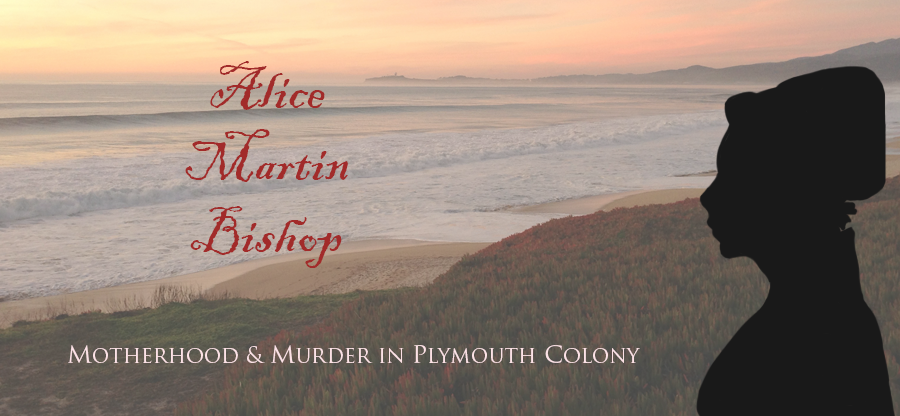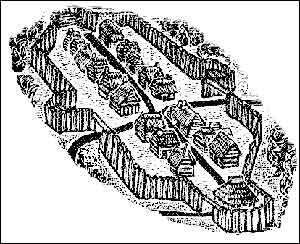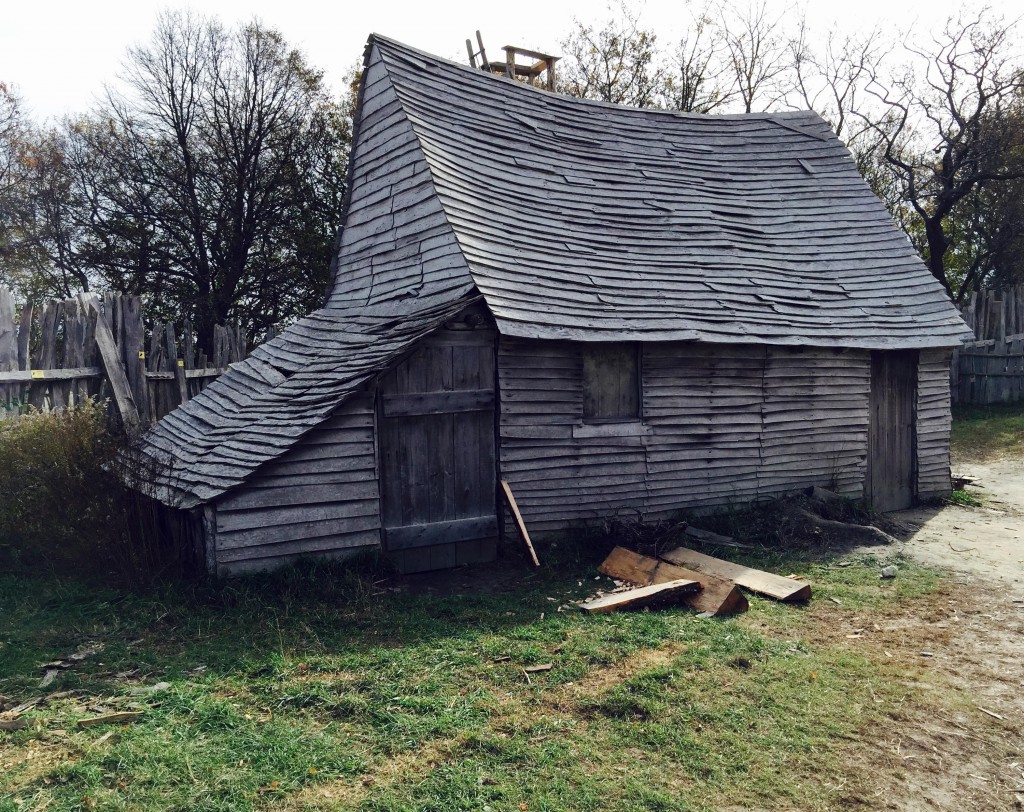Erin Taylor, February 2015
This post shares discussions and insights Kristin and I had after visiting Plimoth Plantation’s 1627 town site (November 2014). The good people at Plimoth Plantation have re-created the first settlement in painstaking detail, and it turns out, a Plymouth home — our AMB crime scene — wasn’t exactly as I had imagined it. The homes were smaller and with lower ceilings than I had figured (of course, I’m nearly six feet tall, so I have a skewed perspective). Also, the houses sat closer together than I had mentally plotted.
We spent two days at Plimoth Plantation, viewing the homes and speaking with reenactors. As we shared our thoughts about Martha’s murder based on what we saw there, it must be remembered this is a 1627 re-creation — in other words, twenty years before her death. By the 1640s, colonists had more tools and construction supplies, and homes were built under less dire circumstances. Within two decades of the Mayflower’s arrival, several towns were developing in the wider colony, but we assume the Bishops lived in Plymouth town proper because the Ramsdens and Winslows (Josiah, head) were their neighbors.



